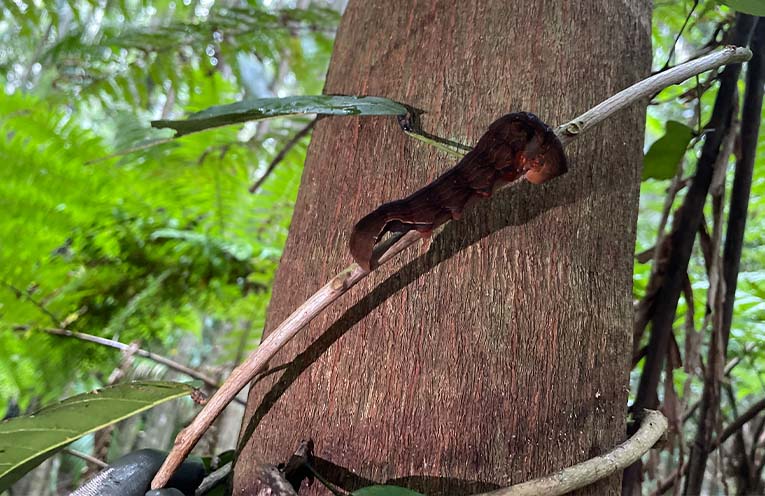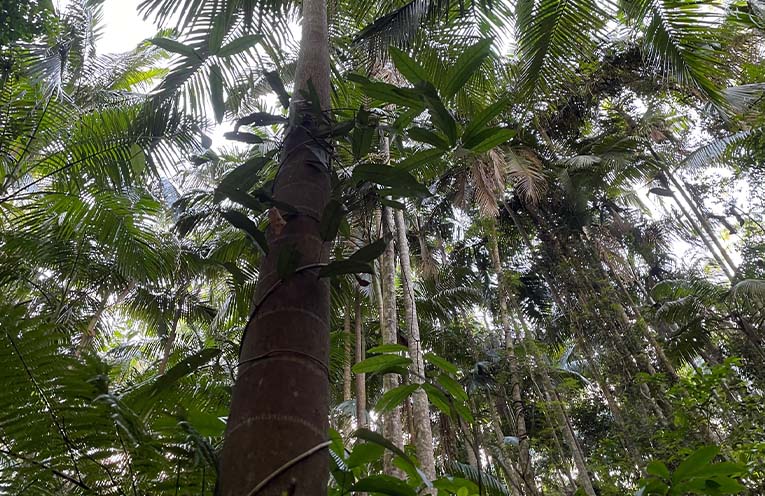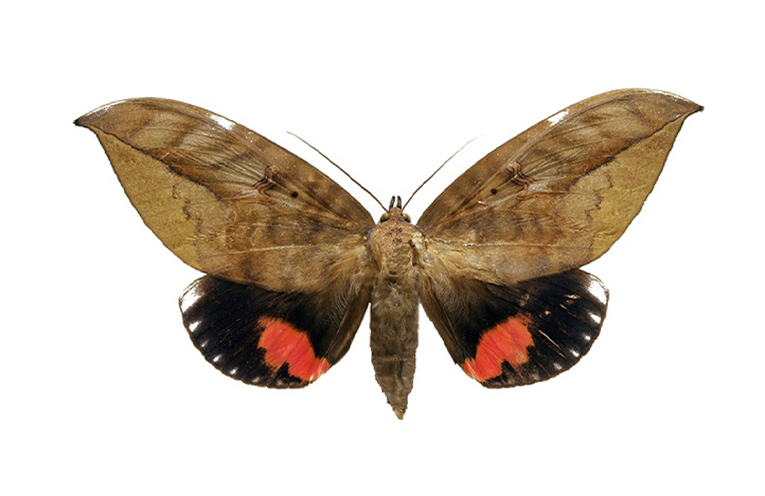
THE JALIIGIRR Biodiversity Alliance has launched urgent on-ground actions to prevent the extinction of the Southern Pink Underwing Moth.
Ecological restoration works are taking place on sites around the Bellinger and Orara Valleys.
 Advertise with News of The Area today.
Advertise with News of The Area today.It’s worth it for your business.
Message us.
Phone us – (02) 4981 8882.
Email us – media@newsofthearea.com.au
The rare rainforest moth with a fourteen-centimetre wingspan is listed as endangered by the Australian and NSW Governments and is known to occur in subtropical rainforests, with the larvae of the moth feeding on the native Carronia multisepalea vine.
The Jaliigirr Biodiversity Alliance has secured funding over five years through the Saving Our Species co-investment fund and the City of Coffs Harbour Council Environmental Levy to undertake the work.
Jaliigirr Project Manager Justin Couper told News Of The Area, “Habitat restoration works through weed control are occurring to ensure the survival of this magnificent species, with ecological restoration teams currently working in lowland rainforest remnants in Bongil Bongil and Bindarri National Parks where the Carronia vine grows.
“Weeds such as lantana have the potential to compete with and smother the vine, reducing available breeding habitat for the moths,” he said.
“The NSW Government’s Saving Our Species program is providing new knowledge on Southern Pink Underwing Moth distribution and ecology, which will contribute to guiding future management for the survival of the species.”
The Southern Pink Underwing Moth is named for the brilliant pink patches on its dark hindwing.
Adult moths are nocturnal and feed on damaged or over-ripe fruit as they do not have piercing mouthparts.
The moths breed in spring and summer and lay their eggs on Carronia vine.
The eggs, caterpillars and pupae are usually found on the lower leaves of the vine.
The caterpillars generally feed on younger leaves and are usually seen from November to March.
When disturbed, the caterpillars produce a spectacular warning display to deter predators.
The moth is sparsely distributed in sub-tropical rainforest from Nambour in south-eastern Queensland to Bellingen in northern NSW.
Habitat loss and environmental degradation are what has ultimately led to the Southern Pink Underwing moth becoming threatened.
“Unfortunately, if action isn’t taken there may be none left by the time we realise their existence and place in our local ecosystems,” said Justin.
By Andrea FERRARI


